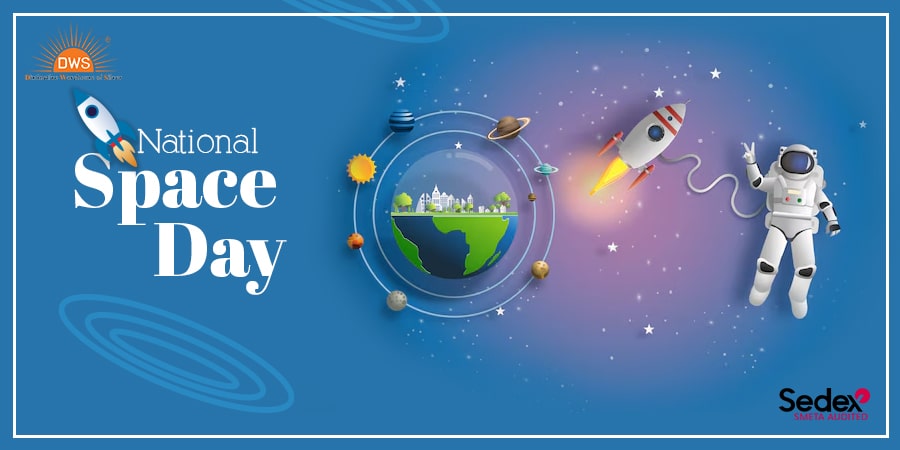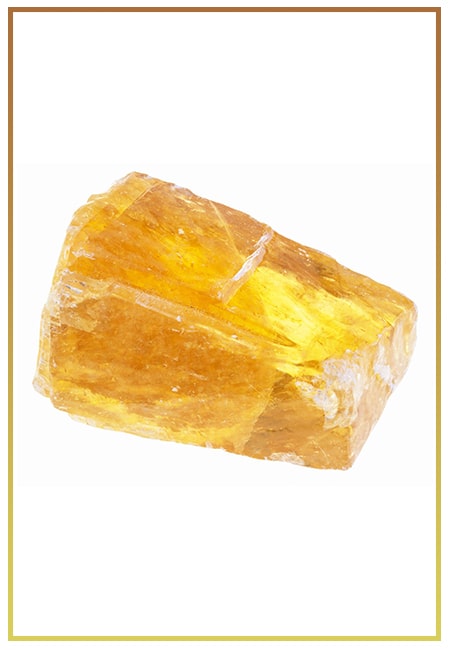- Written By Team DWS
- Festivals
- April 29, 2025
Exploring the Cosmos: The Significance of Space Day
Every year, enthusiasts and experts in the field of astronomy celebrate Space Day, a significant occasion designed to foster an interest in the cosmos, promote education and inspire future generations of scientists, engineers, and dreamers. This day is not just an opportunity to commemorate humanity's achievements in space exploration but also a call to reflect on our place in the universe and the steps we must take to understand it better.

The Origins of Space Day
Space Day was first celebrated on May 6, 1997, as a way to inspire students and the public about space exploration. Founded by the aerospace industry—including NASA, private companies, and educational organizations—Space Day has grown into a global celebration involving schools, communities, and institutions dedicated to science and technology. It highlights the significant advances made in space science and technology, while also recognizing the challenges that lie ahead.
The Importance of Education
The core purpose of Space Day is to encourage education in science, technology, engineering, and mathematics (STEM). With each passing year, the technological requirements for space exploration grow increasingly sophisticated. Students must be equipped with skills to navigate the future of space endeavors—whether it’s designing spacecraft, developing sustainable habitats on other planets, or finding efficient ways to harness resources in space.
On Space Day, schools often organize workshops, presentations, and interactive activities to immerse students in the wonders of the universe. These events aim to demystify complex scientific concepts and show students that they too can contribute to groundbreaking discoveries. By planting the seeds of curiosity, Space Day inspires young minds to envision careers in aerospace, physics, and environmental science and prepares them for the real-world challenges of tomorrow.
Enduring Human Spirit and Innovation
Human exploration of space is not merely a testament to our scientific capabilities; it reflects our insatiable curiosity and drive to explore the unknown. Space Day serves as a reminder of our achievements, such as human landings on the Moon, exploration of Mars, and the establishment of the International Space Station (ISS). Each of these milestones corresponds with historical leaps in innovation, pushing the boundaries of technology and human understanding.
Throughout history, space exploration has proven that challenges can be overcome through innovative thinking, collaboration, and perseverance. This spirit of exploration fuels not just national pride but also international partnerships, showcasing how humanity can work together for a common goal. Consider the collaborations behind programs like the ISS or the numerous international missions to explore Mars—these endeavors are made possible through shared knowledge and resources that go beyond borders.
Addressing Global Challenges
In addition to fostering education and inspiring innovation, Space Day emphasizes the importance of recognizing and addressing the challenges we face on Earth. The technologies developed for space exploration often have profound implications for life back home. From advancements in satellite communications and Earth observation to breakthroughs in materials science and renewable energy, the benefits of space research routinely permeate our daily lives.
Moreover, as we face global challenges such as climate change and resource consumption, understanding our planet from a celestial perspective becomes critical. Space technology allows us to monitor environmental changes, analyze data on climate patterns, and develop strategies to mitigate the impact of human activity on our planet. By linking space exploration with Earth-focused technologies, we can build a sustainable future while searching for answers beyond our atmosphere.
Looking to the Future
Celebrating Space Day also involves envisioning the future of humanity in space. While current endeavors focus on returning humans to the Moon and sending astronauts to Mars, the long-term prospects include exploring asteroids, establishing colonies on other planets, and even searching for extraterrestrial life. This ambitious roadmap not only fuels scientific discovery but also inspires the next generation of explorers to think boldly and innovatively.
The movement toward privatization in space travel means new players are entering the scene, driving down costs and broadening access. Space Day embodies the spirit of embracing these developments—a call for inclusivity and collaboration among governmental bodies, private enterprises, and educational institutions.
Conclusion
Space Day is more than a mere celebration; it represents humanity's collective aspiration to explore the cosmos and understand our place within it. By inspiring curiosity, fostering education, and emphasizing collaboration, we can create a future where the wonders of space become a shared experience for all. As we honor our achievements from the past, we proudly look forward to the adventures that await us beyond Earth—boundless possibilities that will undoubtedly shape the fabric of our civilization for generations to come. Every year on Space Day, we can encourage that spark of interest, envision the extraordinary, and remember that the cosmos is not just a place of exploration, but a mirror reflecting our hopes, dreams, and limitless potential.

Space Day FAQs: Your Questions Answered!
Sure! Here's a list of frequently asked questions (FAQs) about Space Day:
1. What is Space Day?
Space Day is an annual event celebrated to promote interest in space exploration and science. It highlights the achievements in space research and the importance of space technology and education.
2. When is Space Day celebrated?
Space Day is typically celebrated on the first Friday in May each year. However, specific dates may vary, so it's good to check local announcements.
3. Why was Space Day created?
Space Day was established to inspire students, educators, and the public about the wonders of space and the possibilities of space exploration. It aims to encourage interest in STEM (Science, Technology, Engineering, and Mathematics) fields.
4. How did Space Day originate?
Space Day was founded in 1997 by the non-profit organization, Space Day Foundation, and was recognized by various educational institutions and organizations. It was created to celebrate space achievements and raise awareness about the importance of scientific literacy.
5. What activities take place on Space Day?
Activities may include educational programs, workshops, lectures, exhibitions, and interactive events aimed at children and adults. Schools often hold special events or science fairs related to space topics.
6. Who can participate in Space Day?
Space Day is open to everyone! Schools, organizations, and individuals who have an interest in space and science can participate, organize events, and spread awareness.
7. How can I get involved in Space Day?
You can participate by organizing or attending events, creating educational content, volunteering with local science organizations, or simply celebrating by engaging with space-related materials, documentaries, or reading about space.
8. Are there specific themes for Space Day each year?
Yes, each year may have its own theme that focuses on particular aspects of space exploration, scientific advancements, or educational priorities related to space.
9. Where can I find events or resources for Space Day?
Information about Space Day events and resources can often be found on educational websites, local science centers, and planetariums’ official pages. The Space Day Foundation's website also provides resources and event listings.
10. How can educators incorporate Space Day into their curriculum?
Educators can celebrate Space Day by integrating space-related themes into lessons, conducting hands-on experiments, organizing field trips to planetariums, or inviting guest speakers from the science community.
11. Is Space Day recognized internationally?
While Space Day is primarily recognized in the United States, many countries celebrate their own space-themed days or events, and the overall spirit of Space Day has a global appeal, inspiring international participation in space exploration.
12. What resources are available for learning about space?
A variety of resources are available, including books, documentaries, online courses, and educational websites. NASA and other space agencies often provide free educational materials for all ages.
Feel free to use or modify these FAQs based on your specific needs or audience!
Popular on Blogs

Black Tourmaline: Meaning, Healing Properties, Fascinating Facts, Powerful Attributes, Versatile Uses, and Beyond
September 05, 2023 / BY Team DWS
Black Tourmaline, also known as Schorl, is a highly revered crystal with incredible metaphysical properties. It derives its name from the Dutch word "turamali," meaning "stone with ..

Carnelian Stone: Meaning, Healing Properties, Power, Facts, Color, Uses and More
December 26, 2023 / BY Team DWS
Carnelian is a vibrant and captivating gemstone that holds a plethora of meanings, healing properties, and powers. Its warm and fiery energy makes it a popular choice among crystal ..

Citrine: Exploring its Meaning, Healing Properties, Fascinating Facts, Powers, Versatile Uses, and Much More
November 18, 2023 / BY Team DWS
Citrine, with its warm golden hues, has captured the attention and imagination of people for centuries. This beautiful gemstone, commonly associated with wealth and prosperity, hol ..

Black Onyx: Unveiling the Meaning, Healing Properties, Fascinating Facts, Powerful Attributes, Versatile Uses, and Beyond
July 25, 2023 / BY Team DWS
Black Onyx, a striking gemstone admired for its deep black hue and elegant appearance, has captivated people for centuries. In this comprehensive guide, we will delve into the mean ..

Unveiling the Mysteries of Turquoise Stone: Exploring its Meaning, Healing Properties, Power, Facts, Color, Uses, and More
December 05, 2023 / BY Team DWS
Turquoise, with its captivating blue-green hue, has been adorning jewelry and artifacts for centuries. This striking stone has a rich history, rich symbolism, and a plethora of int ..

The History Behind The Popularity of Red Agate
December 23, 2022 / BY Team DWS
An Agate is a type of magma rock that takes many years till it is washed out naturally into the water. And that is the reason this stone has elements of water. This beautiful stone ..

Bloodstone: Unveiling the Meaning, Healing Properties, Facts, Powers, Uses, and More
August 21, 2023 / BY Team DWS
Bloodstone, with its captivating deep green color with specks of red, is a mesmerizing gemstone that has fascinated civilizations for centuries. It possesses unique healing propert ..

Plan a Perfect Valentine's Week with Our Valentine Week List 2025
January 22, 2024 / BY Team DWS
Valentine's Day is undoubtedly the most romantic day of the year, but we believe that one day is just not enough to express your love and make your partner feel special. That's why ..


